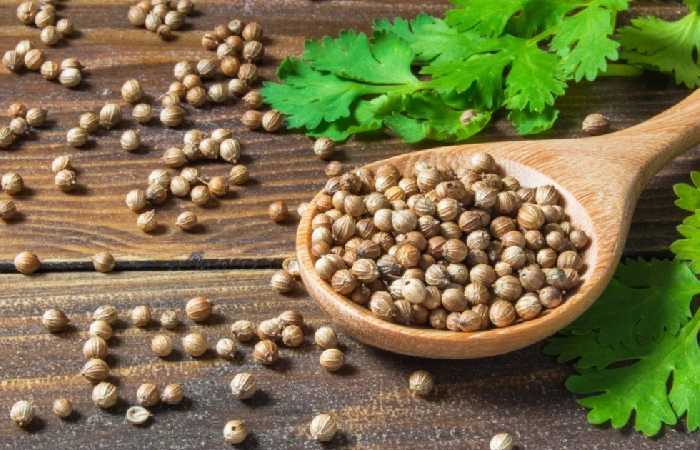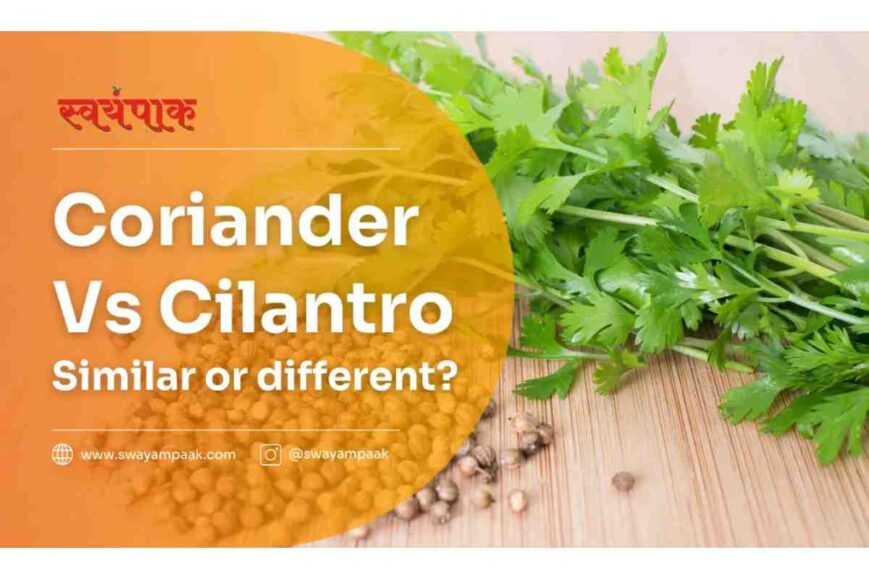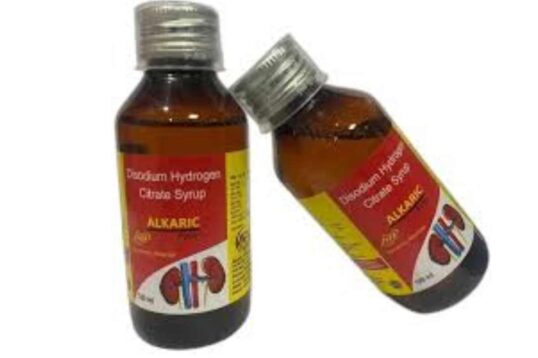Coriander Vs. Cilantro – Cilantro and coriander come from the same plant species, Coriandrum sativum. As per your location, coriander may refer to the dried seeds or the whole plant. Cilantro usually refers to the leaves and stalk.
However, they are termed differently in various parts of the world.
In North America, cilantro refers to the stalks and leaves of the plant. The word “cilantro” remains the Spanish name for coriander leaves. In contrast, the dried seeds of the plant are termed coriander. Globally, it’s a different story. Coriander is the name for the stalk and leaves of the plant, while the dried seeds are called coriander seeds.
Even though they come from the same plant, cilantro and coriander have different nutrient profiles, tastes, and uses. This article provides you with information about the differences between cilantro and coriander.
Nutritional values of coriander and cilantro
Below are the nutritional values of coriander and cilantro. Please continue reading to learn about them.
| Cilantro (% RDI) | Coriander (% RDI) | |
| Dietary fiber | 1.1 | 16.8 |
| Vitamin A | 13.5 | 0 |
| Vitamin C | 4.5 | 3.5 |
| Vitamin K | 38.8 | 0 |
| Manganese | 2.1 | 9.5 |
| Iron | 1 | 9.1 |
| Magnesium | 0.6 | 8.2 |
| Calcium | 0.7 | 7.1 |
| Copper | 1.1 | 4.9 |
| Phosphorous | 0.5 | 4.1 |
| Selenium | 0.1 | 3.7 |
| Potassium | 1.5 | 3.6 |
| Zinc | 0.3 | 3.1 |
Fresh cilantro is 92.2% water; coriander seeds comprise only 8.9% water. The main reason cilantro has lower levels of minerals by weight is that the water in cilantro contains no minerals or calories. Cilantro contains more vitamins, such as vitamins A, K, and E, while coriander is more rich in minerals like iron, manganese, magnesium, and calcium.
Coriander and cilantro have different taste and smell

Both cilantro and coriander have different tastes and smells.
Cilantro is an herb with an aromatic, citrusy flavor. Many people like its refreshing smell and taste, but some others don’t like it. Interestingly, people who find cilantro repulsive tend to have a genetic trait that makes them see cilantro as “foul” or “soapy.”
Health Benefits of Cilantro and Coriander
Several studies say cilantro and coriander have some notable health benefits.
1. May Reduce Inflammation
Both cilantro and coriander are full of molecules called antioxidants.
Antioxidants are supposed to help decrease inflammation in the body by binding to and overpowering inflammation-promoting molecules identified as free radicals.
Furthermore, a study found that the antioxidants in a coriander seed extract minimized inflammation besides inhibiting the progress of cancer cells from the breast, stomach, colon, prostate, and lungs.
2. May Reduce Risk Factors for Heart Disease
Heart disease remains the main reason of death worldwide. Some studies have found that cilantro extract may reduce the formation of blood clots. Cilantro extract supplements may reduce the risk of heart disease by reducing blood clotting.
3. May Lower Blood Sugar Levels
High blood sugar levels remain a risk factor for type 2 diabetes. Amazingly, both cilantro and coriander seeds may help minimize blood sugar levels. They lower blood sugar levels by increasing the activity levels of enzymes that aid in eliminating sugar from the blood.
4. May Help Fight Infections
As per the studies, cilantro and coriander’s antibacterial and antimicrobial properties may help fight infections. As per some studies, compounds from fresh cilantro leaves aided in fighting foodborne infections by killing bacteria such as Salmonella enterica. Also, coriander seeds fight bacteria that commonly cause urinary tract infections.
Final Words
Both cilantro and coriander are excellent additions to your diet. Add cilantro for a more refreshing taste or coriander to help spice up your recipes.


